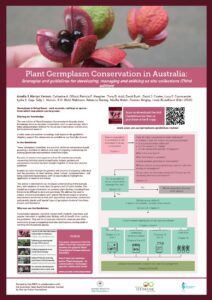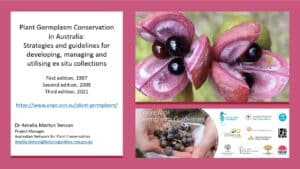The third edition of the Germplasm Guidelines is now online to download for free! 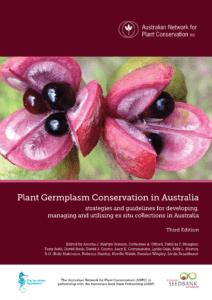
Or you can purchase a hard copy of the Germplasm Guidelines.
The new edition of ‘Plant Germplasm Conservation in Australia – strategies and guidelines for developing, managing and utilising ex situ collections’ (known as the Germplasm Guidelines) was launched by Professor Tim Entwisle on 7 September 2021, during the Australasian Seed Science Conference. These guidelines have been revised with grant funding from The Ian Potter Foundation, as a joint initiative of the ANPC and the Australian Seed Bank Partnership.
This page contains information on the Guideline revision and links to the following resources:
5. Downloadable poster and slide deck
6. Background on the revision of the Guidelines
1. Supporting videos
To support our partners in ex situ conservation the ANPC has produced a selection of videos which complement the revised Guidelines. You can watch these below and access other videos related to the Guidelines, including their launch, on our Germplasm YouTube playlist.
2. Webinar series
In early 2022 the ANPC hosted a series of webinars in collaboration with BCARM (the BGANZ Collections and Records Management Group). This 4 part series introduced experts involved with the Germplasm Guidelines revision. It focused on data collection and record keeping, biosecurity, the role of living collections in conservation and seed. You can watch each webinar recording below and access presentation slides and links mentioned in the recordings.
Webinar 1: Plant treasures – in conversation about data collection and record keeping in ex situ collections.
Slides from Amelia Martyn Yenson’s presentation | Links mentioned in the webinar
Webinar 2: Plant Treasures: in conversation about biosecurity in conservation collections
Link to webinar 2 recording | Brett Summerell’s presentation slides | Bob Makinson’s presentation slides | Bec Stanley’s presentation slides | Article by Brett Summerell | Links mentioned in this webinar
Webinar 3: The role of the nursery and living collections in conserving native plant species: current practice and future needs
You can find the program here
Webinar 4: An introduction to seed testing, germination and dormancy
3. Case studies
The new edition of the Guidelines includes 50 case studies, showcasing ex situ conservation in practice. Extended versions of some case studies have been published in Australasian Plant Conservation and you are welcome to access the full text of these articles here.
4. Fenner conference
As part of this project, the ANPC developed workshops to support our partners in ex situ conservation. 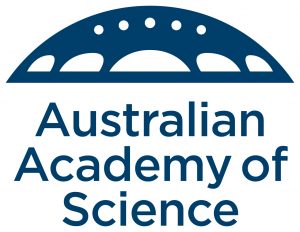
Our first workshop, an Australian Academy of Science Fenner Conference on the Environment, was held on Thursday 9 September 2021 with the theme ‘Exceptional Times, Exceptional Plants: Ex situ conservation strategies for Australian plants that cannot be conserved by conventional seed banking methods’.
We have a dedicated webpage with more information on this workshop here. You can also access a full recording of the workshop and associated content and read the full conference report which was published in Australasian Plant Conservation Volume 30 Issue 3 in early 2022.
5. Downloadable poster and slide deck 

We have created a poster you can download and display in your tea room, or provide in training notes to students
We have also compiled a short PowerPoint slide deck which you can use at conferences and as a teaching resource to share the Germplasm Guidelines.
6. Background on the revision
Purpose of the Germplasm Guidelines
The Germplasm Guidelines are focused on conservation of common and threatened plant species, including many species that are endemic to Australia. The Guidelines provide an evidence-based best practice guide for the management of ex situ (off site) collections of seeds, plant tissues, or plants in nurseries and living collections. The guidelines aim to provide access to current research findings and practice to maximise the value of every seed or plant collection.
The updated Germplasm Guidelines complement the recent revision of the Guidelines for Translocation of Threatened Plants in Australia (2018) and the Florabank Guidelines (2021), a component of the Healthy Seeds Project.
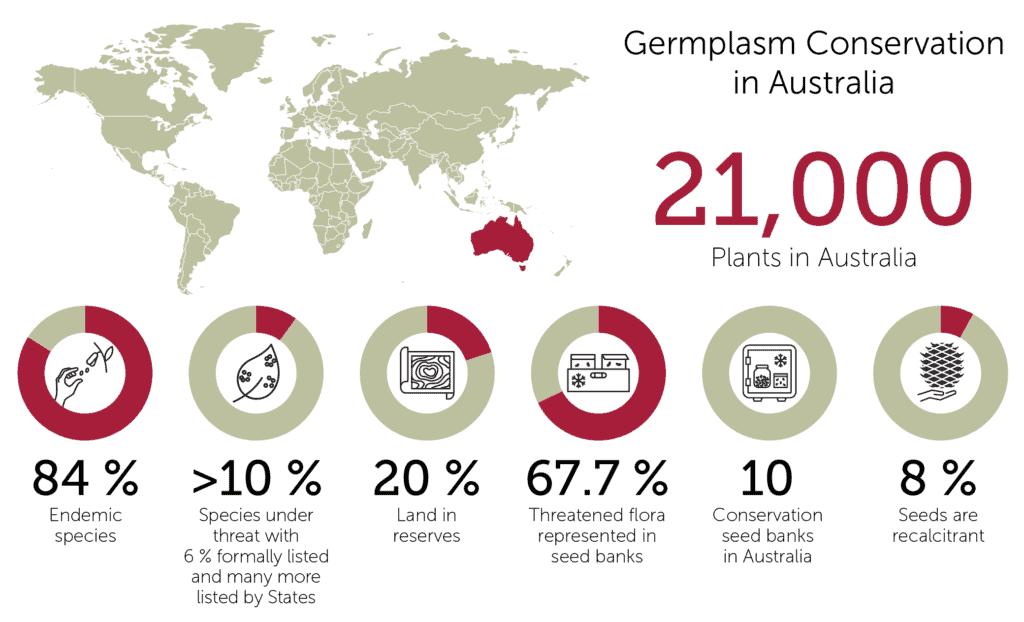
Germplasm conservation in Australia: an overview, as at April 2021 (Martyn Yenson et al. 2021, Germplasm Guidelines Chapter 1). The proportion of recalcitrant species is a global estimate (Hay and Probert 2013) though prevalence is higher in some habitats (see Chapter 6).
Content in the Germplasm Guidelines
The Guidelines cover the spectrum of activities from planning and plant material collection through to storage and a diverse range of uses, including species recovery, translocation of nursery-grown plants or seeds, research, establishment of living collections, education, horticultural display and sustainable plant development.
This new edition includes 50 case studies, showcasing ex situ conservation in practice. Extended versions of some case studies have been published in Australasian Plant Conservation and you are welcome to download the full text of these articles.
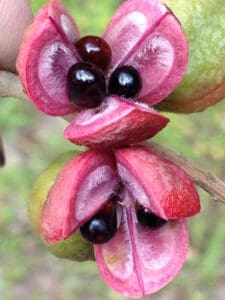
Rainforest tree, Elattostachys nervosa (credit: Graeme Errington, Royal Botanic Gardens and Domain Trust)
Chapter 1: Introduction.
Chapter 2: Options, major considerations and preparation for plant germplasm conservation.
Chapter 3: Genetic guidelines for acquiring and maintaining collections for ex situ conservation.
Chapter 4: Seed and vegetative material collection.
Chapter 5: Seed banking: orthodox seeds.
Chapter 6: Identifying and conserving non-orthodox seeds.
Chapter 7: Seed germination and dormancy.
Chapter 8: The role of the plant nursery in ex situ conservation.
Chapter 9: Tissue Culture.
Chapter 10: Cryopreservation.
Chapter 11: Living Plant Collections.
Chapter 12: Isolation, propagation and storage of orchid mycorrhiza and legume rhizobia.
Chapter 13: Special collections and under-represented taxa in Australasian ex situ conservation programs.
Chapter 14: Risk management and preparing for crises.
Chapter 15: Maintenance, utilisation and information storage.
Who could use the Germplasm Guidelines
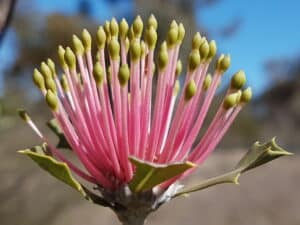
Matchstick Banksia, Banksia cuneata (credit: Leonie Monks, DBCA)
The Guidelines are written for a range of users, including conservation agencies, scientists, seed bank and botanic gardens staff, students, volunteers and not-for-profit organisations, ecologists, consultants and anyone interested in applied plant biology. They will be useful for professionals new to plant conservation projects, and those adding ex situ actions to conservation advice, recovery plans or policy.
The Guidelines aim to support conservation of Australian plant species and include several case studies on conservation of threatened species in New Zealand. However, the Germplasm Guidelines may also be valuable to those working on different floras, especially those beginning the critical work of conserving diversity in ex situ collections. While some seedbanks and conservation partnerships are well-resourced, the authors of the Guidelines aim to meet the needs of users at a range of resource levels.
Acknowledgements
The Guidelines were written by 78 scientists, practitioners and horticulturists around Australia and New Zealand, as well as several international collaborators. The authors’ in-kind contributions amount to hundreds of hours collating principles and practices relating to a wide range of germplasm collections.
Germplasm Guidelines steering committee members
- ANPC Project Manager (Germplasm Guidelines); Dr Amelia Martyn Yenson,
- ANPC Business Manager: Ms Jo Lynch,
- ANPC Project Manager (Florabank Guidelines): Dr Lucy Commander,
- ANPC Communications Manager: Ms Chris Fernance
- CSIRO: Dr Linda Broadhurst,
- Australian Seed Bank Partnership: Mr Damian Wrigley,
- Australian Grains Genebank: Dr Sally Norton and Dr Katherine Whitehouse,
- Royal Botanic Garden Sydney: Dr Cathy Offord,
- Australian National Botanic Gardens: Dr Lydia Guja,
- Royal Botanic Gardens Victoria: Dr Neville Walsh,
- Australian Tree Seed Centre: Dr David Bush,
- Botanic Gardens Australia and New Zealand/Auckland Botanic Garden: Ms Rebecca Stanley
- NSW Dept of Planning, Industry and Environment: Dr Tony Auld.
The steering committee also gratefully acknowledges the input of Dr David Coates and Mr Bob Makinson.
Key staff

Amelia Martyn Yenson Credit: Michael Lawrence-Taylor
For more information, please email the ANPC Project Manager (Germplasm Guidelines) Dr Amelia Martyn Yenson.

